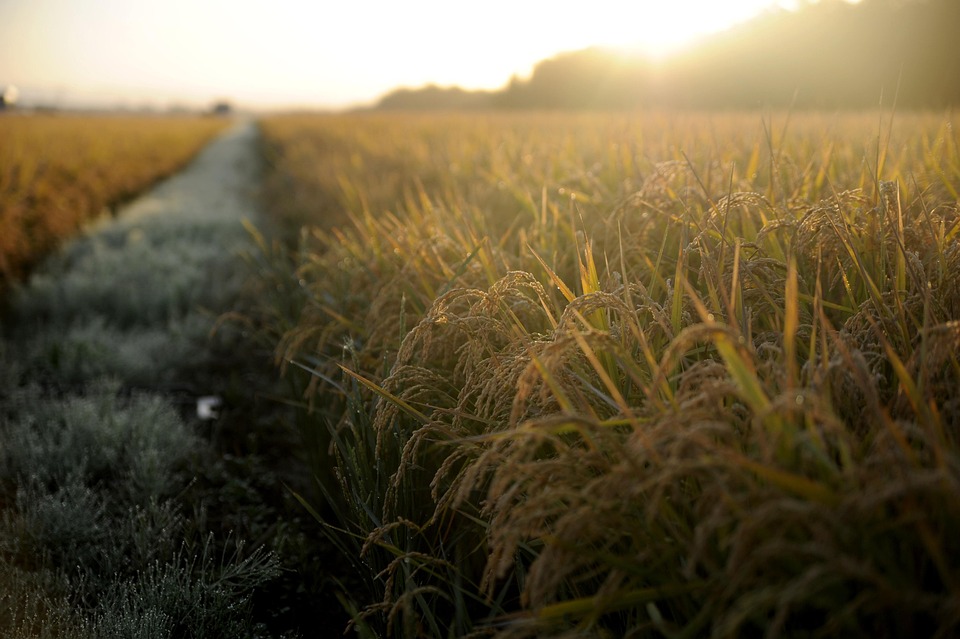# Green Thumbs Up: Easy Sustainable Gardening Techniques for Beginners
Picture this: a vibrant garden filled with bursting colors, aromas of fresh herbs swirling in the breeze, and the satisfying crunch of fresh veggies harvested right from your patch of earth. It’s like stepping into a miniature Eden! In a world increasingly consumed by concrete jungles, there’s something incredibly fulfilling about growing your own food sustainably. Beginners often ask how to start this journey, which is what this upbeat guide is all about. Here, you’ll discover easy sustainable gardening techniques that will turn anyone into a proud garden warrior. So grab your gloves and let’s dig in!
## Why Sustainable Gardening Matters
Sustainable gardening goes beyond simply growing your own food. It’s about creating a holistic system where plants, soil, and even the critters that inhabit your garden thrive in harmony. By adopting sustainable practices, we reduce waste, conserve water, and encourage biodiversity—all while reaping delicious benefits from our own yard.
Not convinced yet? Think about the magical moment of picking a ripe tomato, still warm from the sun, and savoring it right there among the plants you nurtured. That’s the kind of happiness that sustainable gardening brings.
## Getting Started with Easy Sustainable Techniques
### 1. Choosing the Right Location
The first step to a flourishing garden is picking the perfect spot. Look for a place that gets at least 6–8 hours of sunlight daily. Observe how sunlight and shade change over the day, and trust your instincts when choosing a spot. Don’t forget to think about accessibility as well—having your garden close at hand makes tending to it a joy rather than a chore.
### 2. Soil Health is Wealth
Healthy soil is the foundation of any garden. Start by testing your soil’s pH and nutrient levels to understand what it needs. You can do this through an inexpensive soil testing kit.
**Composting:** One of the best ways to enrich your soil is through composting. Creating a compost bin can be as simple as using a dedicated corner of your yard. Add kitchen scraps, grass clippings, leaves, and even coffee grounds to create a nutrient-rich humus that will dramatically improve your soil. Watching your trash turn into treasure is part of the satisfaction of sustainable gardening!
### 3. Native Plants and Heirloom Varieties
When selecting plants, consider native species and heirloom varieties. Native plants are adapted to your local climate, making them more resilient and easier to maintain. Heirloom varieties not only preserve genetic diversity but often have richer flavors and are far more delicious than your average supermarket offerings.
### 4. Companion Planting
This ancient technique involves planting compatible species close together to enhance growth. For instance, tomatoes and basil are a classic pairing; basil enhances the flavor of tomatoes while also warding off pests. Research companion planting pairs to maximize your garden’s efficiency and health.
### 5. Water Wisely
Water conservation is crucial in sustainable gardening. One easy method is to establish a drip irrigation system, which delivers water directly to the roots and minimizes evaporation. Rain barrels are another option—collect rainwater from your roof and use it to hydrate your plants.
### 6. Mulching — The Magic Blanket
Mulching not only beautifies your garden but also retains moisture, suppresses weeds, and enriches the soil as it decomposes. Natural materials such as straw, wood chips, or shredded leaves work beautifully. Plus, it’s like giving your plants a cozy blanket!
### 7. Pesticide-Free Pest Control
Instead of chemical pesticides, embrace natural control methods. Introduce beneficial insects like ladybugs and lacewings to your garden. You can also use neem oil sprays or garlic solutions to keep unwanted pests at bay without harming the beneficial creatures.
### 8. Seasonal Planting
Understanding the growing seasons in your area can tremendously impact your garden’s success. Planting at the right time ensures your crops have the best chance of thriving. Use a planting calendar specific to your USDA hardiness zone to schedule your planting.
## Pro Tips for Success
1. **Start Small:** As a beginner, don’t overwhelm yourself. Begin with a small plot or a few containers. Mastering a few plants can lead to greater confidence for future expansions.
2. **Keep a Garden Journal:** Jot down your planting dates, watering schedules, and observations. Not only will this help you remember what worked or didn’t, but it offers a lovely record of your gardening progress.
3. **Create a Garden Community:** Join local gardening clubs or online forums to connect with like-minded folks. There’s nothing more motivating than sharing experiences, advice, and even seeds!
4. **Embrace Imperfection:** Nature isn’t perfect, and neither are gardens! Don’t be disheartened by a few wilting leaves or weeds. Use these experiences as learning opportunities.
5. **Experiment with Intercropping:** Planting different crops in the same space can improve yields and reduce pest issues. Try mixing faster-growing crops (like radishes) with slower-growing ones (like carrots) to fully utilize your garden space.
## Seasonal Guide to Sustainable Gardening Techniques
### Spring: Kickstarting New Life
Spring is the perfect time to prepare your soil, plant cool-weather crops like lettuce and peas, and start your seedlings indoors. This is when your garden begins to awaken!
### Summer: Full Bloom
Once the last frost passes, it’s time for bountiful harvesting. Enjoy your summer blooms and begin planting fall crops like kale and Brussels sprouts to extend your harvest season.
### Fall: The Harvest Festival
Autumn is for collecting and storing your bounty. It’s also a good time to plant cover crops, which will help enrich the soil over the winter.
### Winter: Planning and Preparation
Use the winter months for reflection and planning. Sketch out your garden layout for the next year, explore new methods online, or even start seed-saving from your best-producing plants.
## Conclusion: Your Sustainable Garden Awaits
There’s a unique joy in growing your own food sustainably, and it’s now easier than ever to embark on this adventure. With these easy gardening techniques, you’ll find joy and fulfillment blooming right at your fingertips.
Whether you’re looking to grow a simple herb garden or create a full-blown vegetable patch, every little effort counts towards a greener planet. By practicing sustainable gardening, not only will you reap delicious fruits (and veggies!) of your labor, but you’ll also contribute positively to the environment.
As you start your journey, remember to celebrate each milestone—every seedling, every harvest, and even every weed you pull—it’s all part of the magic. So get that green thumb ready; your sustainable garden awaits and it’s going to be a blooming success!
—
With easy steps and fun techniques, you’re now equipped to plunge into sustainable gardening. Here’s to the fresh veggies, beautiful blooms, and the sheer joy of nurturing your landscape! Happy gardening!



